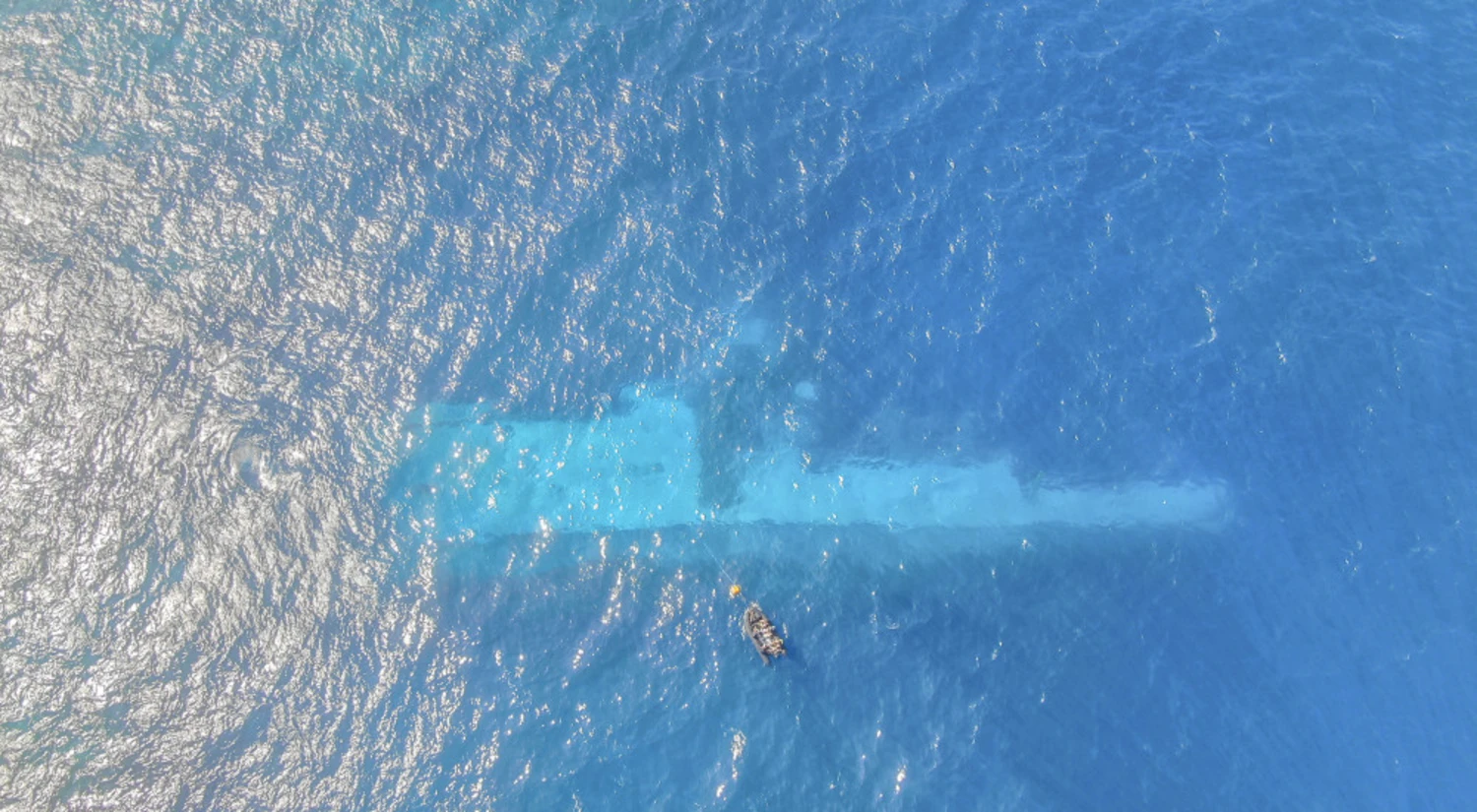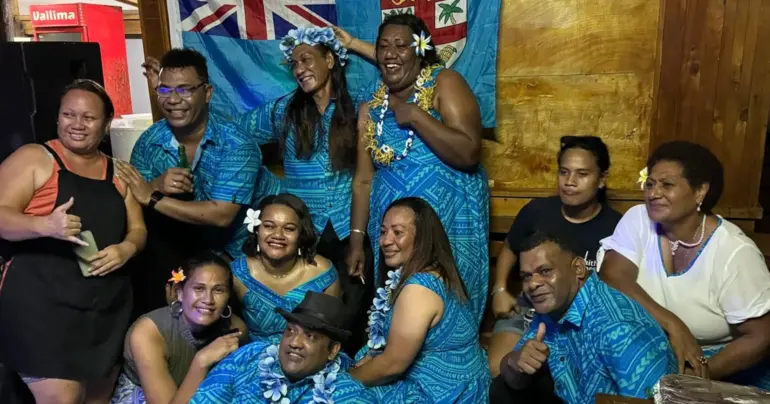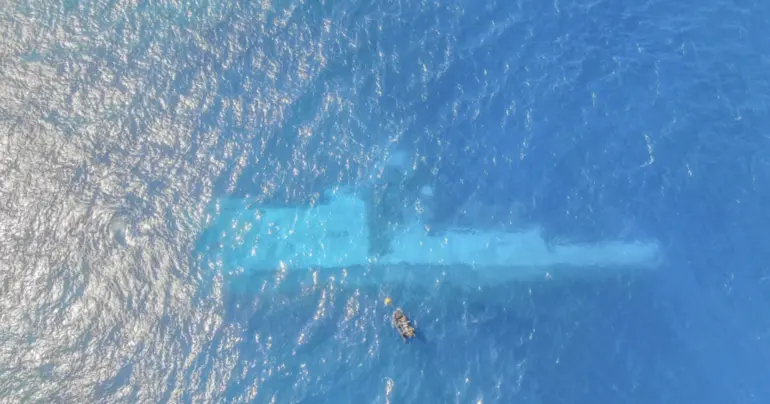Sunken ships, rising risks: Pacific shipwrecks and maritime security
One year on from the sinking of the HMNZS Manawanui after it ran aground in Samoan waters, the New Zealand government has announced that it will do “the right thing” and pay 10 million Samoan tālā (AU$5.3 million) to the Samoan government in compensation for the sinking in Safata Bay, off the southern coast of Upolu. The shipwreck has caused devastating local impacts, with significant damage to the reef, coral, mangroves, and fish stocks in the area. A two-kilometre exclusion zone remains in place around the wreckage site.
The Samoan government met with Safata villagers and representatives of the New Zealand government on 15 October to discuss allocation of the funds within the affected communities. Potential beneficiaries will be required to submit applications, which the Samoan government will review to determine the extent to which applicants were affected.
Samoa is far from the only Pacific country grappling with the long-term consequences of shipwrecks. Over the past seven years, the Major Projects Foundation has found 60 wrecks with a critical threat of producing a potential oil spill. They are located in Micronesia (25), Marshall Islands (12), Solomon Islands (12), Australia (5), Papua New Guinea (4), New Zealand (1), and Palau (1). In addition, there are 118 medium–high priority wrecks likely to require future investigation and 308 medium–low priority wrecks.
Currently, only seven Pacific nations are signatories to the Nairobi International Convention on the Removal of Wrecks, which provides a legal basis for the removal of new wrecks within a states’ exclusive economic zone. However, this doesn’t apply to underwater heritage sites, including historic shipwrecks. As a result, there are no international or regional accords providing dedicated funding for historical or wartime wreck cleanups. For example, the cost to remove the oil leaking from a single wreck in Chuuk Lagoon, Micronesia, is expected to be “upwards of US$10 million (AU$15.4 million)” – a figure entirely unmanageable for small island states.
Yet interest in Pacific maritime security is not lacking and international attention has grown substantially over the past two decades. The issue is that this attention remains focused on “hard” security concerns, such as foreign military bases, illegal, unreported, and unregulated fishing, and undersea surveillance, domain awareness and monitoring. By contrast, the “soft” security threats that most directly affect Pacific communities, such as climate change, environmental degradation, and human security, remain under-addressed.
Pacific leaders have been clear since the 1990s: climate change – not foreign militaries – poses the biggest security threat to their nations. Yet international policy dialogue continues to prioritise strategic competition over ecological survival. It’s time to redefine maritime security to reflect Pacific priorities, not just those of external partners.
The Pacific’s established maritime security partners include Australia, New Zealand, the United States, France, and China, while India, Japan, South Korea, and the European Union are increasing their regional engagement. In 2018, the Pacific–European Union Maritime Partnership was established, with the European Union and the government of Sweden contributing €45 million to new or existing maritime security agreements.
Broadening these agreements to include coordinated environmental risk mitigation would be a productive next step. For example, the partnership could establish a “shipwreck preparedness fund” or integrate wreck remediation into annual maritime security programs, ensuring proactive clean-ups rather than reactive disaster responses. Currently, most international mechanisms only mobilise after an environmental pollutant incident has occurred – when the damage is already done.
Research has already identified 60 high-risk wrecks in dire need of action to prevent ecological disaster. International partners collectively invest millions into Pacific maritime security yearly, yet shipwreck remediation receives minimal attention. Embedding environmental risk reduction into existing security agreements would close this critical gap.
Australia currently contributes towards the Pacific’s marine environmental protection through its funding of the Office of the Pacific Ocean Commissioner. Building on this leadership by supporting a regional maritime environmental emergency framework makes sense. And shifting the dialogue on maritime security in the Pacific to incorporate existential and environmental security would strengthen the ability of Pacific nations to negotiate holistic security agreements.
Australia’s National Plan for Maritime Environmental Emergencies (2020) provides a possible model. It coordinates prevention, response preparedness, disaster response, impact assessment, and cost recovery across Australia’s state, territory, and federal jurisdictions. A regional adaptation of this plan with support from the Pacific’s maritime security partners could provide the mechanisms needed to prevent oil leaks from high-risk wrecks before they occur.
Security in the Pacific isn’t solely a military issue. It is a human one. When the ocean is at risk, so are the communities who depend on it. Maritime security and environmental wellbeing cannot be separated – and policy frameworks must reflect that reality.
Sheridan Ward is a researcher on non-militarisation and countries without sovereign military institutions.











